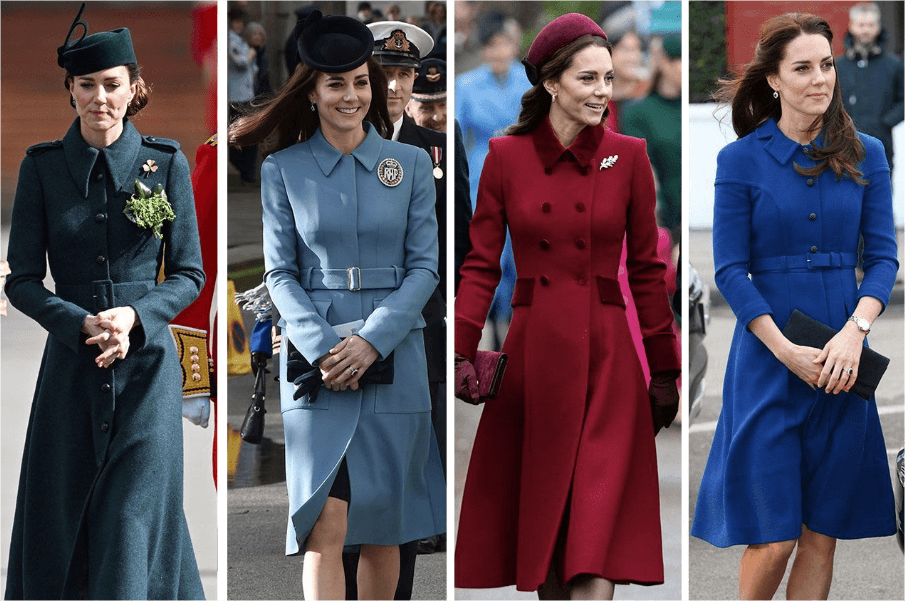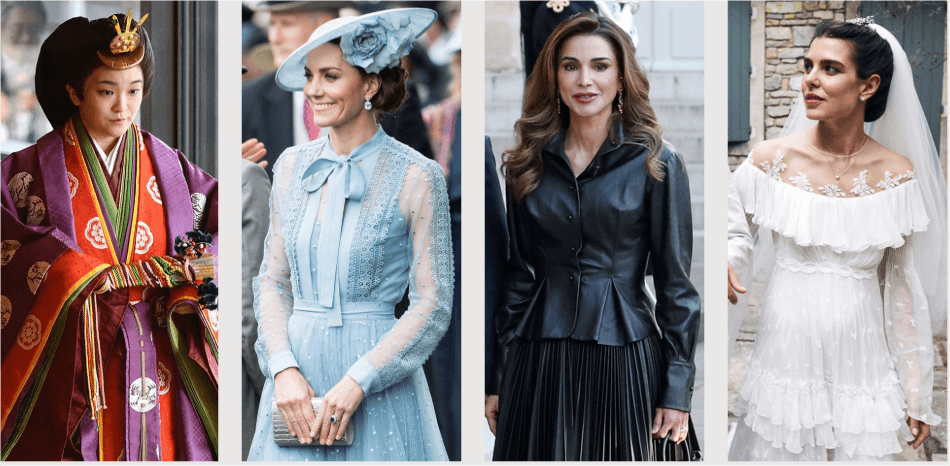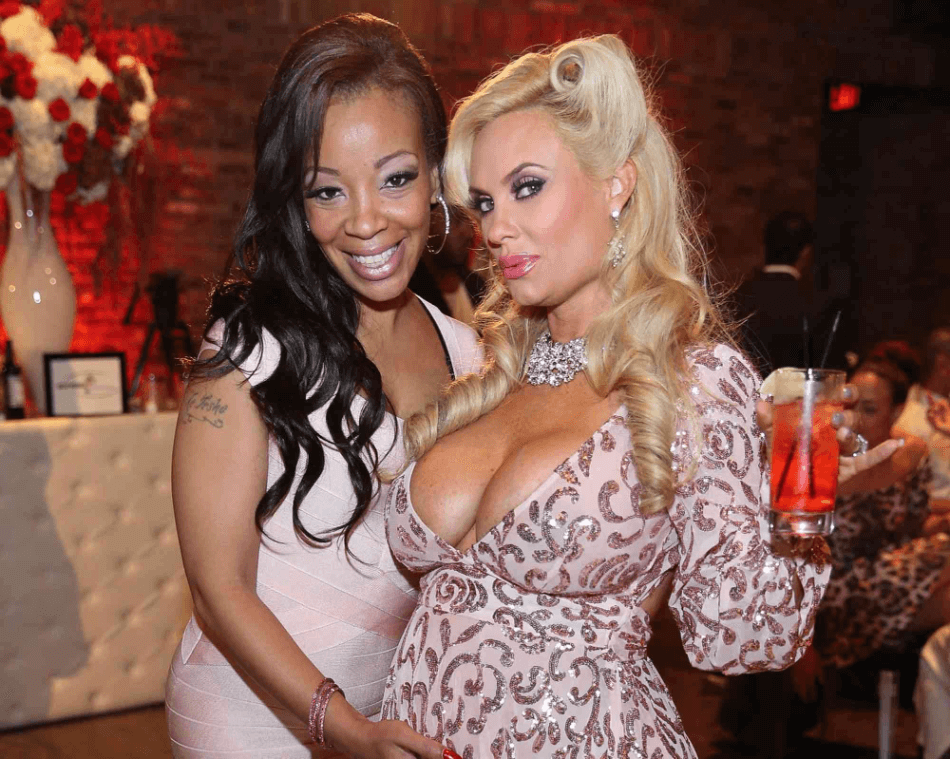📑Table of Contents:
- Icons That Changed the Rules
- Kate Middleton: The Modern Royal Blueprint
- Queen Camilla: Symbols in Every Stitch
- State Looks and Symbolic Layers
- Royal Style Beyond the Palace Gates
- Wimbledon: Casual but Calculated
- Fashion That Communicates Values
- How Trends Flow from Thrones to Stores
- The Next Generation of Royal Style
- Final Thoughts

Royal fashion isn’t just about looking elegant. It’s about making statements—sometimes subtle, often bold. From tiaras to tennis shoes, the way royals dress reflects identity, power, and evolution. Their style doesn’t just influence trends. It defines eras.
Over the decades, royal wardrobes have shifted from strictly ceremonial to culturally relevant. Queens, duchesses, and princesses dress to express modern values while honoring deep traditions. Today, royal fashion sits at the intersection of legacy and innovation.
Icons That Changed the Rules
Princess Diana transformed royal fashion forever. She wore shoulder pads one day, gym sweats the next. Designers like Catherine Walker tailored custom gowns for her. However, Diana also shopped on the high street, proving that accessibility and royalty could coexist. She used clothing to connect with people, and she succeeded.
Princess Margaret walked a different path. Known for her flair, she wore dramatic silhouettes, edgy fabrics, and daring necklines. Her fashion made headlines. More importantly, it made statements. She brought glamour to Buckingham and inspired generations of rule-breakers in the fashion world.
Today, that spirit continues.
Kate Middleton: The Modern Royal Blueprint
Catherine, Princess of Wales, bridges old and new better than anyone. She re-wears coats, pairs Alexander McQueen with affordable brands like Zara, understands optics, and dresses for diplomacy, motherhood, and influence—often simultaneously.
When she steps out in a muted beige dress, it’s calculated. Her recent shift to neutral palettes isn’t accidental. Fashion writers note how she’s sending a quieter, more intentional message. She’s embracing minimalism while maintaining elegance. And when the occasion demands glamour? She delivers effortlessly.
For instance, her red cape at a 2025 state banquet stunned global audiences. The cape evoked a sense of royal ceremony, yet it felt fresh and cinematic. Paired with sleek hair and understated jewelry, it modernized the monarchy’s style.
Queen Camilla: Symbols in Every Stitch
Queen Camilla doesn’t trend. She signals.
Her wardrobe leans traditional, but her brooches, bags, and color choices carry meaning. At Battersea, she wore an onyx and pearl dog brooch. The accessory nodded to her charity work and lifelong love of animals.
She also rotates heirloom jewelry in key appearances. That honors continuity. It says, “I belong here”—without needing words. Her approach is subtle, but it communicates lineage and loyalty.
State Looks and Symbolic Layers
Nothing says royal fashion like a state banquet or coronation. These moments aren’t about trends. They’re about narrative. Every accessory, every hemline holds purpose.
Take Kate Middleton’s tiara choice for the July 2025 state dinner. She wore Queen Mary’s Lover’s Knot Tiara—the same one Princess Diana favored. That decision linked her to two legacies: one of glamor, the other of continuity.
Meanwhile, Dutch Princess Catharina-Amalia chose the Mellerio Ruby Parure for her first official tiara debut. This wasn’t just sparkle. It was her stepping fully into royal adulthood. It sent a message across the Netherlands and Europe: she’s ready for the role.
Royal Style Beyond the Palace Gates
Royal fashion influences the masses in real-time. Dubbed “the Kate effect,” outfits worn by the Princess of Wales often sell out within hours. Brands she wears see surges in online traffic. That reach extends from designer gowns to $89 dresses.
But it’s not just about sales. It’s about style cues. Women mimic her silhouettes, colors, and modest detailing. A cream coat she wore once is now a closet staple across Europe.
Moreover, other royals spark inspiration, too. Princess Sofia of Sweden leans into sleek, minimalist design. Queen Letizia of Spain blends runway with function. Crown Princess Mary of Denmark infuses Danish chic with global polish. Each woman curates her message—outfit by outfit.
Wimbledon: Casual but Calculated
Even at sporting events, royal fashion is a consideration. Wimbledon has become its runway.
Kate Middleton often chooses structured dresses for the stands. In 2025, she stunned in a belted white Self-Portrait look, paired with heels and a beach tote. Another day, she wore a blue Roksanda design—graceful yet relaxed.
And then there’s Princess Charlotte. At the same match, she wore a pale blue dress with a Pandora charm bracelet. The look was cute, classic, and perfectly polished for a young royal. Even accessories sparked headlines, hinting at early style influence.
Fashion That Communicates Values
What makes royal fashion powerful isn’t fabric—it’s meaning. Royals don’t dress casually, even when it looks casual. Every look is layered with strategy.
They wear British or national designers during official visits. They re-wear clothes to support sustainability, select culturally sensitive outfits while abroad, and choose color schemes that align with the causes they support. In short, they utilize fashion as a form of soft diplomacy.
Kate’s wardrobe during Caribbean tours was carefully curated. Camilla’s consistent use of vintage hats reflects continuity. Meghan Markle’s minimalist palette sparked modern debates around race, representation, and tradition.
Royal fashion is never random.
How Trends Flow from Thrones to Stores
Fashion trickles from royal closets into Instagram grids, Pinterest boards, and retail chains. Brooches surged in popularity after Queen Elizabeth II’s tribute appearances. Capes returned to runways after Kate’s banquet appearances. Even headbands and midi dresses rode a royal wave.
Today’s “royalcore” trend borrows heavily from these cues. Think puff sleeves, vintage pearls, modest cuts, and fitted waistlines. Designers respond. Influencer’s style looks “inspired by Kate.” Even Gen Z taps into the royal look, whether ironically or earnestly.
The Next Generation of Royal Style
The future of royal fashion looks promising. Princess Leonor of Spain, Princess Elisabeth of Belgium, and Princess Ingrid Alexandra of Norway already wear labels like Hugo Boss and Carolina Herrera. Their style blends youth with grace.
Crown Princess Victoria of Sweden continues to wear bold colors with a structured look. Princess Beatrice mixes whimsy with elegance. Even lesser-known royals like Harriet Sperling are being hailed as fashion voices.
As this new wave rises, they’ll carry the same fashion responsibility: to blend personal style with public symbolism.

Final Thoughts
Royal fashion remains one of the most powerful, visible, and influential forces in global style. It bridges heritage and innovation. It turns the ceremony into a message, and it shows how what you wear can reflect who you are, and what you believe.
From Diana’s revenge dress to Kate’s quiet power suiting, from tiaras to tennis shoes, royal wardrobes tell stories we remember.
Fashion fades. But royalty dresses for history.





